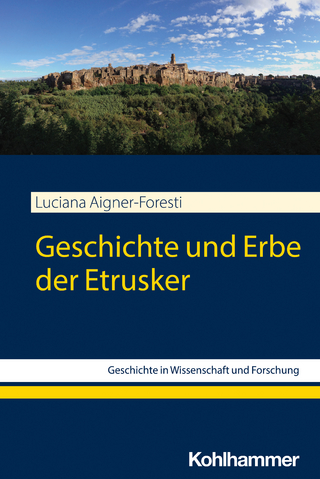
Exeter: A Roman Legionary Fortress and Civitas Capital
Archaeopress Archaeology (Verlag)
978-1-80327-628-1 (ISBN)
Exeter has long been known as a Roman city, but it was only in 1971 that its origin as a legionary fortress of the mid-first century AD was revealed. That discovery was the result of excavation work undertaken by the first professional archaeological unit to be based in the city. The author was one of those involved and this book explains how innovative archaeological techniques introduced in the 1970s were employed, not only to construct a picture of the legionary fortress, but to demonstrate with some confidence that the 5,000 strong garrison which manned it was the Second Augustan Legion. Whilst at Exeter the legion built its own stone bathhouse. Constructed only around 15-20 years after the Roman invasion in AD 43, it is the earliest known monumental masonry building in the South-West of Britain. Significantly, it was also possible to establish that Exeter became a Roman regional capital around AD 80 after the departure of the legion to Wales. The redundant bathhouse was converted to a basilica (council chamber and administrative centre) for the fledgling city which went on to acquire a circuit of walls by the start of the third century. Exeter continued to flourish as a Roman city on the very western edge of the Roman Empire before its ultimate demise in the late fourth century.
John Pamment Salvatore began his archaeological career in 1972 with the Exeter Museums Archaeological Field Unit, undertaking multi-period excavation in the historic city under the tutelage primarily of the late Christopher Henderson. After a decade ‘in the field’ he left for Birmingham University where he gained a degree in Ancient History and Archaeology before completing a Doctorate on the Roman Republican siege-camps of Numantia in Spain. Returning to Exeter in the early 1990s, he had two subsequent spells with the Exeter Unit, interspersed with eight years at English Heritage and some time as the City Archaeologist at Plymouth. He was back at the Exeter Unit (by then known as Exeter Archaeology) when it was wound up in 2011. Following the disappearance of the city’s ‘own’ unit he spent the next decade working on various archaeological projects of all periods. However, he never lost his first heartfelt attachment to Exeter and its Roman past and he began to write this account of the Roman fortress and city only two weeks after his retirement in the Christmas of 2022.
Author’s Note
General Notes
Introduction
The Roman army arrives at Exeter
The Legionary Fortress (and its stone-built bathhouse)
Extra-mural sites of the prata legionum
The fortress and its garrison at the time of the Boudican revolt
Exeter as a Roman town and Civitas Capital
Late Roman Exeter
The end of Roman Exeter and the beginning of a new story
Final Thoughts
Further reading
Index
| Erscheinungsdatum | 20.02.2024 |
|---|---|
| Reihe/Serie | Archaeopress Roman Sites Series |
| Zusatzinfo | 122 figures (colour throughout) |
| Verlagsort | Oxford |
| Sprache | englisch |
| Maße | 174 x 245 mm |
| Gewicht | 665 g |
| Themenwelt | Geisteswissenschaften ► Archäologie |
| Geschichte ► Allgemeine Geschichte ► Altertum / Antike | |
| ISBN-10 | 1-80327-628-2 / 1803276282 |
| ISBN-13 | 978-1-80327-628-1 / 9781803276281 |
| Zustand | Neuware |
| Informationen gemäß Produktsicherheitsverordnung (GPSR) | |
| Haben Sie eine Frage zum Produkt? |
aus dem Bereich


